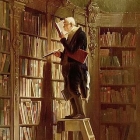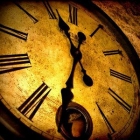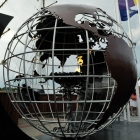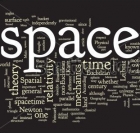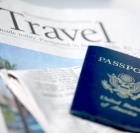-
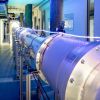 +17 +4
+17 +4Qubits 30 meters apart used to confirm Einstein was wrong about quantum
A new experiment uses superconducting qubits to demonstrate that quantum mechanics violates what's called local realism by allowing two objects to behave as a single quantum system no matter how large the separation between them. The experiment wasn't the first to show that local realism isn't how the Universe works—it's not even the first to do so with qubits.
-
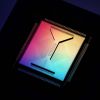 +26 +6
+26 +6Weird particle that remembers its past discovered by quantum computer
Particles with unusual properties called anyons have long been sought after as a potential building block for advanced quantum computers, and now researchers have found one – using a quantum computer
-
 +17 +2
+17 +2Schrödinger's Dog
-
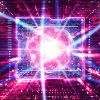 +26 +3
+26 +3Physicists Extend Qubit Lifespan in Pivotal Validation of Quantum Computing
Scientists were able to keep a qubit in its ideal state for twice as long as normal. Along the way, they demonstrated the practicality of quantum error correction (QEC), a process that keeps quantum information intact for longer by introducing room for redundancy and error removal.
-
 +21 +4
+21 +4Room-Temperature Superconductor Discovery Meets With Resistance
A paper in Nature reports the discovery of a superconductor that operates at room temperatures and near-room pressures. The claim has divided the research community.
-
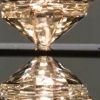 +15 +2
+15 +2Physicists Claim Creation of a Superconductor at Near-Ambient Conditions
Few discoveries in science would revolutionize technology as much as a material that achieves superconductivity at room temperature, under relatively mild pressures.
-
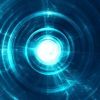 +15 +6
+15 +6For the first time ever, physicists see particles form through quantum tunneling: ScienceAlert
Chemistry takes effort. Whether by raising the temperature, increasing the odds of matching atoms colliding in a hot collision, or increasing the pressure and squeezing them together, building molecules usually requires a certain cost in energy.
-
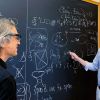 +16 +6
+16 +6Physicists Rewrite a Quantum Rule That Clashes With Our Universe
Ajarring divide cleaves modern physics. On one side lies quantum theory, which portrays subatomic particles as probabilistic waves. On the other lies general relativity, Einstein’s theory that space and time can bend, causing gravity. For 90 years, physicists have sought a reconciliation, a more fundamental description of reality that encompasses both quantum mechanics and gravity. But the quest has run up against thorny paradoxes.
-
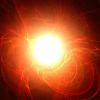 +23 +2
+23 +2Physicists Say Aliens May Be Using Black Holes as Quantum Computers
If life is common in our Universe, and we have every reason to suspect it is, why do we not see evidence of it everywhere? This is the essence of the Fermi Paradox, a question that has plagued astronomers and cosmologists almost since the birth of modern...
-
 +4 +1
+4 +1'Negative mass' created at Washington State University
Washington State University physicists have created a fluid with negative mass, which is exactly what it sounds like. Push it, and unlike every physical object in the world we know, it doesn’t accelerate in the direction it was pushed. It accelerates backwards. The phenomenon is rarely created in laboratory conditions and can be used to explore some of the more challenging concepts of the cosmos, said Michael Forbes, a WSU assistant professor of physics and astronomy and an affiliate assistant professor at the University of Washington.
-
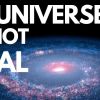 +16 +4
+16 +4How Physicists Proved The Universe Isn't Locally Real - Nobel Prize in Physics 2022 EXPLAINED
-
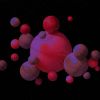 +15 +1
+15 +1Why More Physicists Are Starting to Think Space and Time Are ‘Illusions’
A concept called “quantum entanglement” suggests the fabric of the universe is more interconnected than we think. And it also suggests we have the wrong idea about reality.
-
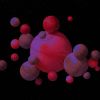 +4 +1
+4 +1Why More Physicists Are Starting to Think Space and Time Are ‘Illusions’
A concept called “quantum entanglement” suggests the fabric of the universe is more interconnected than we think. And it also suggests we have the wrong idea about reality.
-
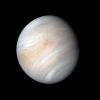 +3 +1
+3 +1Physicist encourages continuing the search for life in Venus' atmosphere
In a recent paper accepted to Contemporary Physics, a physicist from Imperial College London uses past missions and recent findings to encourage the importance of searching for life in the atmosphere of the solar system’s most inhospitable planet, Venus.
-
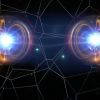 +25 +5
+25 +5Physicists have used entanglement to 'stretch' the uncertainty principle, improving quantum measurements
Examining microscopic quantum objects is exceedingly tricky, because their properties are connected to each other. But there could be a new method to measure them as accurately as possible.
-
 +25 +5
+25 +5Study Shows How The Universe Would Look if You Broke The Speed of Light, And It's Weird
Nothing can go faster than light.
-
 +12 +2
+12 +2A Powerful Recoil Effect Magnified NASA’s Asteroid Deflection Experiment
Scientists continue to pore over the results of NASA’s stunningly successful DART test to deflect a harmless asteroid. As the latest findings suggest, the recoil created by the blast of debris spewing out from Dimorphos after impact was significant, further boosting the spacecraft’s influence on the asteroid.
-
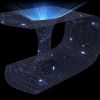 +17 +4
+17 +4Breakthrough wormhole simulation may unite quantum physics and general relativity
Scientists have devised a quantum experiment that allows them to study the dynamics of wormholes, theoretical spacetime entities that first emerged from Albert Einstein's 1915 theory of gravity, or general relativity.
-
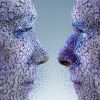 +11 +3
+11 +3Expert Proposes a Method For Telling if We All Live in a Computer Program
Physicists have long struggled to explain why the Universe started out with conditions suitable for life to evolve.
-
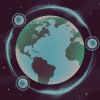 +22 +2
+22 +2Three-Way Entanglement Results Hint at Better Quantum Codes
A team of physicists has entangled three photons over a considerable distance, which could lead to more powerful quantum cryptography.
Submit a link
Start a discussion





